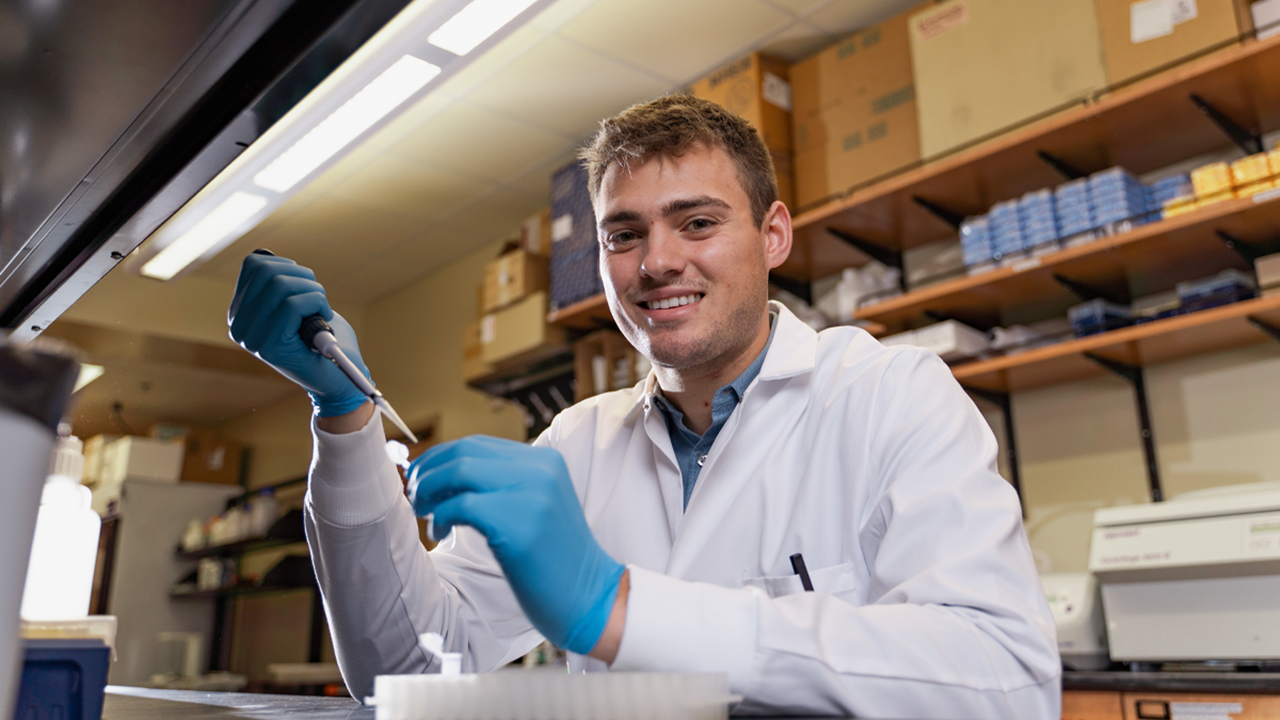Mason Woldt Researches Early Detection Technology for Stroke Patients

Strokes are the second leading cause of death globally. Strokes impact 101.5 million individuals per year worldwide, 87% of which are IS.
Because it is strenuous and costly to detect an IS or monitor post-onset symptoms, Woldt suggests a more convenient alternative by using a synthetic biomarker system.
“Commonly used imaging technologies to detect an IS, such as CT scans, are expensive and time-consuming, making them impractical for routinely testing high-risk individuals,” said Woldt. “I proposed to construct a synthetic biomarker to detect minor IS rapidly at home before damage to the brain has occurred. The system could also monitor any post-onset IS progression.”
This has the potential to be developed into patented diagnostic technology for early detection of IS in high-risk and aging populations.
“If successful, my synthetic biomarker could ease the inconvenience and large expense of diagnosing a stroke incident,” said Woldt. “If my project does not yield promising results, it will still have increased biomedical knowledge in the field of IS imaging.”
Woldt plans to complete his project in 2023 and present his findings at USD’s IDEAFest, set for April 5-6.
Woldt, a Slayton, Minnesota, native, began his research process with William Chen, Ph.D., assistant professor of basic biomedical sciences, when he enrolled in Chen’s medical lab. After developing the project, Woldt and Chen submitted it to the CURCS Mini-Grant Program and received funding for their research.
“Mason is a creative and intelligent student who does experiments very cautiously and rarely makes mistakes,” said Chen. “I am impressed with his progress within such a short period of time.”
Prior to this project, Woldt primarily focused on cardiovascular health and diseases. However, due to the experiences of close friends, he became intrigued in learning more about strokes.
“A couple of family friends, as well as my high school football coach, suffered from strokes,” said Woldt. “After that, I was drawn to learning more about strokes and the related physiology.”
Heading into the future, Woldt plans to attend medical school and become a practicing physician. He hopes to return to South Dakota after school and serve rural communities within the state.
“I have no doubt that the experiences I gain by working with future patients will fuel my passion to improve medicine in IS imaging,” said Woldt.

